FROM MOSCOW TO SAMARA: A JOURNEY THROUGH WORLD CUP CITIES AND VENUES
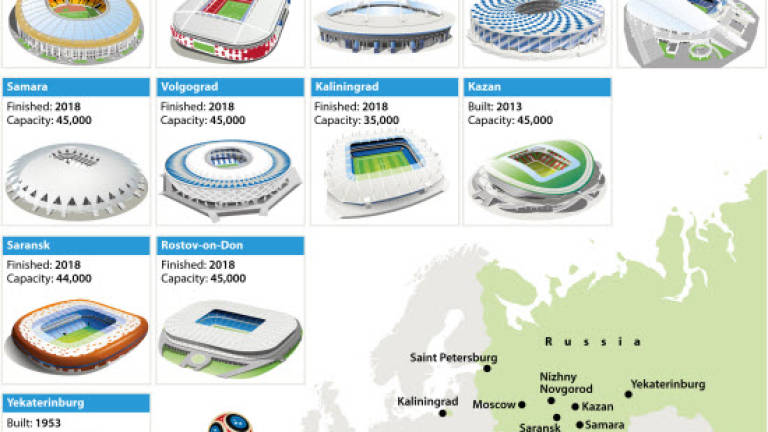
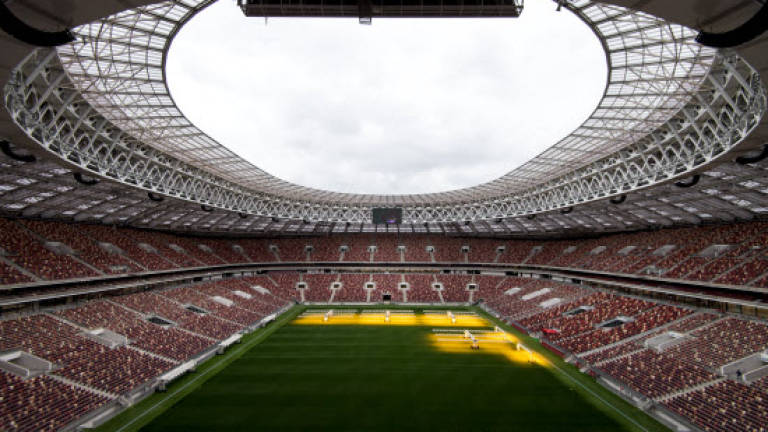
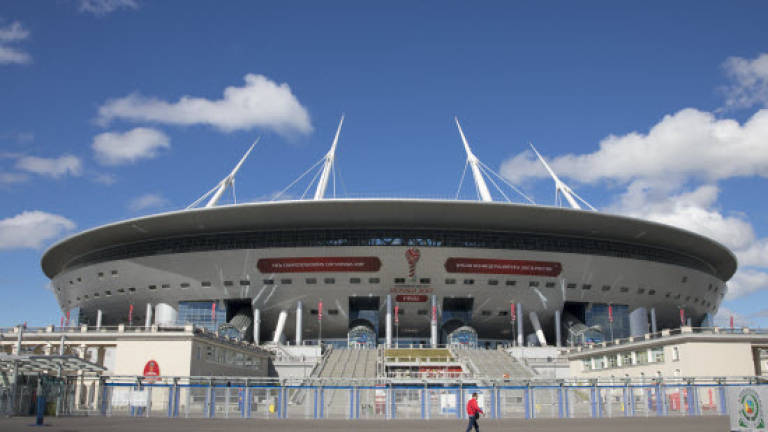
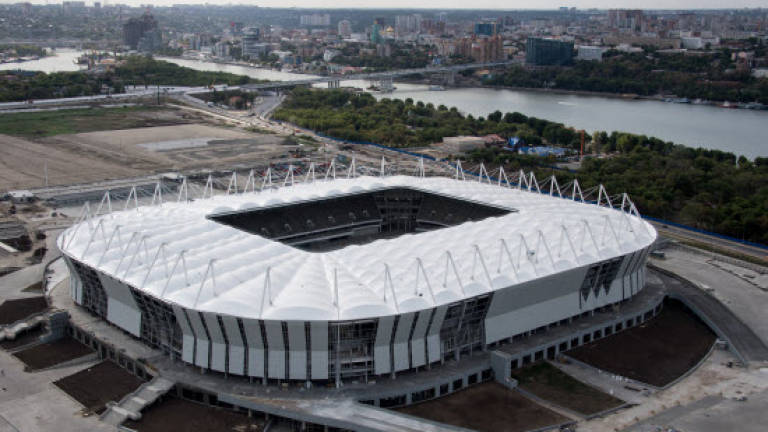
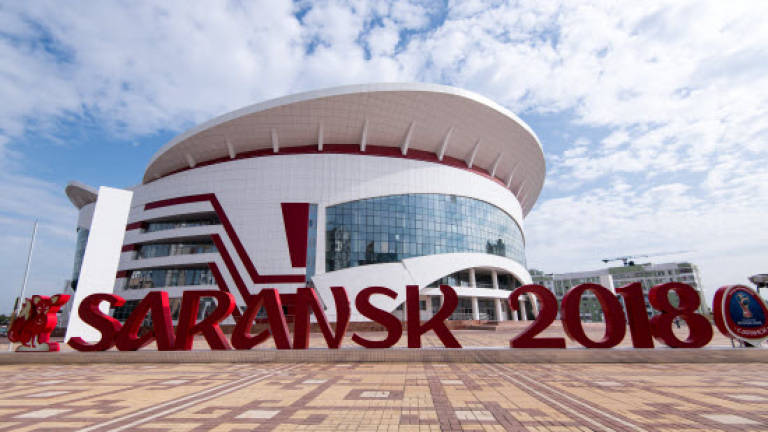
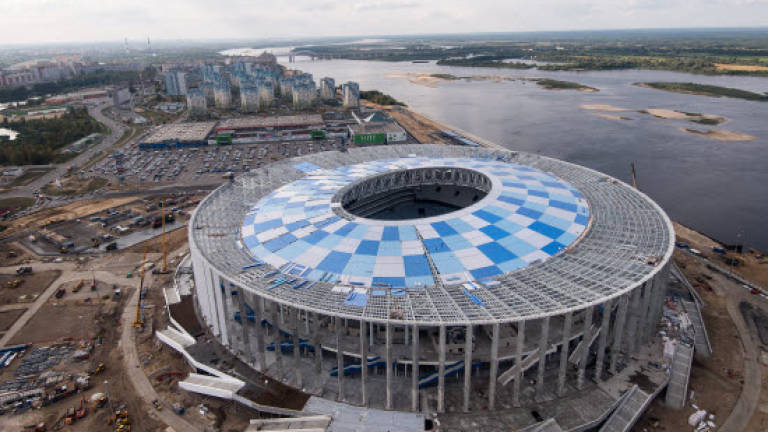
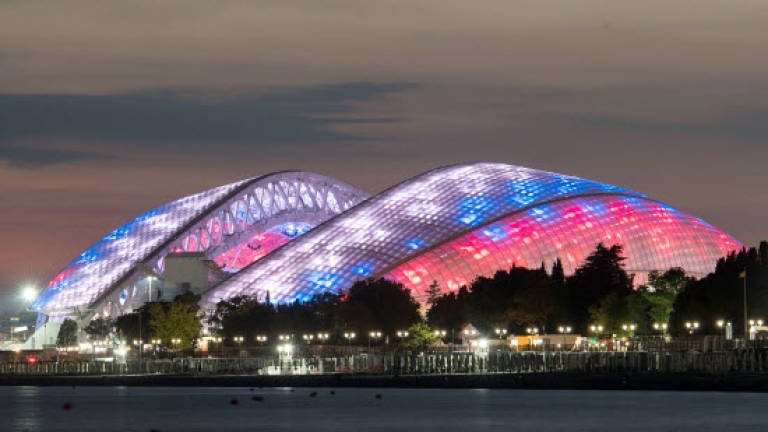
MOSCOW (dpa) – From the majestic Moscow to the quiet Saransk, from the historic Revolution in Saint Petersburg to the blood spilt in Stalingrad: Russia’s history is as vast as the country itself, with its 17 million square kilometres that span 11 time zones.
The Russia 2018 World Cup is set to be played in 11 cities and 12 stadiums, all of them in the country’s western regions. What follows is a journey through the host cities, their history, the curiosities they treasure and their stadiums.
MOSCOW, A MAJESTIC AND MODERN CITY
The city: With more than 13 million people, Russia’s majestic capital is a fascinating city. Parks, buildings, the metro, the streets, everything is impressive in Moscow. The Kremlin, the Red Square and the Bolshoi Theatre are three of its highlights, but the city has not stood still: even if everything will remind visitors of the past, Moscow is also the height of modernity.
Stadiums: Moscow is the only host city that is set to have two World Cup stadiums, Luzhniki and Otkritie Arena. Luzhniki will host the opening game and the final, plus five other games, and it has a capacity of 80,000 people. It was built in 1956 as Lenin Central Stadium and hosted events like the 1980 Olympics, the 2008 Champions League final and the 2013 Athletics World Championships. Otkritie, Spartak Moscow’s home stadium, was opened in 2014 and holds 45,000 people. It is set to host three group-round games and one match in the round of 16.
SAINT PETERSBURG, THE EMPIRE’S FORMER CAPITAL THAT BECAME LENINGRAD
The city: Russia’s second-largest city, the capital of the Russian Empire before the 1917 Revolution, stands in the country’s north-west, on the Gulf of Finland. It was founded by Tsar Peter the Great in the early 1700s, as a window towards Europe. After the Revolution, it was renamed Leningrad. Visitors should not miss its historic centre, which is a UNESCO World Heritage Site.
The stadium: Saint Petersburg Arena, also known as Krestovsky, was opened for the 2017 Confederations Cup, where it hosted the opening game and the final. It cost approximately 1 billion dollars and has a capacity of 64,000 spectators. At the World Cup, it is set to host four group-round games, one match in the round of 16, one semi-final and the game for third place.
KALININGRAD, A RUSSIAN CITY INSIDE EUROPE
The city: It is the country’s westernmost city, in a Russian exclave between Lithuania and Poland that is also called Kaliningrad. The city, which once belonged to Germany, became part of the Soviet Union at the end of World War II.
The stadium: It was built especially for the World Cup, although it is set to host local club Baltika after the event. Kaliningrad Stadium, with a capacity of 35,000 people, will host four group-round games.
KAZAN, A CITY WITH YOUTH AND SPORT AS ITS TRADEMARKS
The city: In recent years, it has become Russia’s "sports capital." It has hosted many sports events, including the 2013 Summer Universiade and the 2015 World Aquatics Championships. It has top teams in football, basketball and ice hockey. An estimated one-sixth of Kazan’s population are university students. It is also one of Russia’s richest cities, thanks to its oil reserves.
The stadium: Opened in 2013, Kazan Arena holds 45,000 seats. The Rubin Kazan stadium is set to host four group-round games, one match in the round of 16 and one quarter-final.
VOLGOGRAD, SITE OF THE BLOODIEST BATTLE IN HISTORY
The city: Known as Stalingrad in the Soviet era, it was the site of the bloodiest battle in history. More than two million people are believed to have died there, in the first major defeat for Hitler’s Germany.
The stadium: Volgograd Arena is scheduled to be opened shortly before the start of the World Cup. It was built for that tournament and is set to host four group-round games.
ROSTOV-ON-DON, HOME TO THE COSSACKS
The city: It takes its name from the river Don, and it is a port city in south-western Russia that was once home to the Cossacks. The town of Starocherkasskaya, 27 kilometres away, is the old capital of the Don Cossacks.
The stadium: Rostov Arena, built especially for the World Cup, is set to hold 45,000 people and will host four group-round matches and one game in the round of 16.
SOCHI: SEA, MOUNTAINS AND THE MOST EXPENSIVE OLYMPICS IN HISTORY
The city: This seaside city on the Black Sea became known world-wide when it hosted the 2014 Winter Olympics. It is famous for its landscapes, with a contrast of mountains and beaches.
The stadium: Fisht Stadium was built for the Olympics and was already one of the host cities of the 2017 Confederations Cup. With a capacity of 40,000 people, it is set to host four group-round games, one match in the round of 16 and one quarter-final.
NIZHNY NOVGOROD, A CITY WITHOUT FOREIGNERS IN THE SOVIET ERA
The city: It was once called Gorky, after the writer Maxim Gorky, who was born there. In the Soviet era, it was out of bounds for foreigners because it was home to abundant military, industrial and scientific infrastructure.
The stadium: Located on the bank of the Volga River, its design is inspired in water and wind, two of the region’s natural assets. It holds 45,000 seats and is set to host four group-round games, one match in the round of 16 and one quarter-final.
SARANSK, THE SMALLEST OF THE WORLD CUP’S HOST CITIES
The city: With barely 300,000 residents, it is the 2018 World Cup’s smallest host city. It is also, however, one of Russia’s most pleasant cities, as well as one of those with the highest living standards.
The stadium: The orange, red and white Mordovia Arena is set to hold 45,000 spectators, a capacity that will be reduced to 25,000 after the World Cup. During the tournament, it is set to host four group-round games.
YEKATERINBURG, IN THE NAME OF CATHERINE
The city: Named after Catherine, the wife of Tsar Peter the Great who would later reign herself as Catherine I, Yekaterinburg stands in the middle of Russia, east of the Ural Mountains, on the border between Europe and Asia.
The stadium: Yekaterinburg Arena was built in 1950 and renovated from 2015. It holds 35,000 spectators and is set to host four group-round games.
SAMARA, AN AEROSPACE HUB ON THE VOLGA RIVER
The city: Built at the confluence of the Volga and Samara rivers, it is one of the hubs of Russia’s aerospace industry. Indeed, one of its main monuments is a 68-metre-tall model of the Soyuz launch system that weighs 20 tonnes, a tribute to the world’s first human space flight, made in 1961 by Yuri Gagarin.
The stadium: Samara Arena was built for the World Cup and is set to hold 45,000 fans. It will host four group-round games, one match in the round of 16 and one quarter-final.